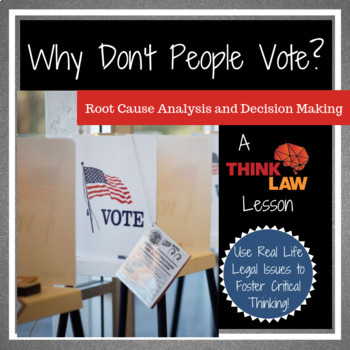Why Don't People Vote? Root Cause Analysis and Decision Making
- Zip
Description
If you're reading this description, you probably teach kids about the importance of voting. Every student hears this message in school- so why DON'T people vote as an adult?
In this thinkLaw lesson students spend time conducting a root cause analysis for the problem of low voter turnout. Is it apathy? Are people overwhelmed? Do people feel that their votes don't matter? Have your students wrestle with these issues.
- Students determine reasons why U.S. citizens do not vote
- Students analyze those reasons to determine the heart of the issue
-Students execute a root cause analysis
- Student brainstorm ways these problems could be addressed
The best critical thinking occurs when student productively struggle over real-life issues. Real life is messy and grey and doesn't have easy answers!
Why Don't People Vote includes:
- Teacher's Guide
- PowerPoint presentation
-Student Sheets available as Word Documents AND editable PDF
Be sure to check out our other Root Cause Analysis and Decision-Making Lessons on TPT!





